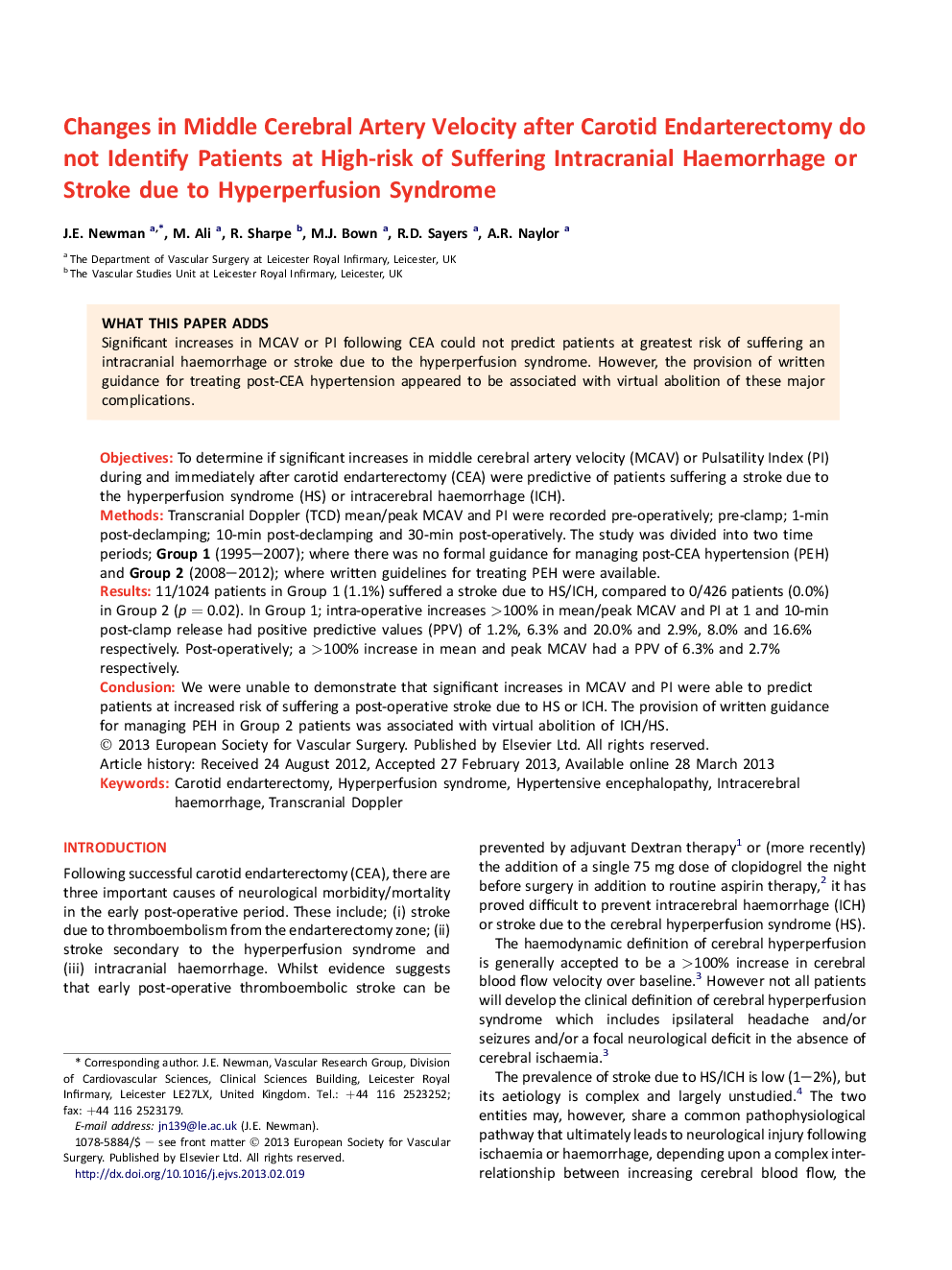| Article ID | Journal | Published Year | Pages | File Type |
|---|---|---|---|---|
| 2912440 | European Journal of Vascular and Endovascular Surgery | 2013 | 10 Pages |
ObjectivesTo determine if significant increases in middle cerebral artery velocity (MCAV) or Pulsatility Index (PI) during and immediately after carotid endarterectomy (CEA) were predictive of patients suffering a stroke due to the hyperperfusion syndrome (HS) or intracerebral haemorrhage (ICH).MethodsTranscranial Doppler (TCD) mean/peak MCAV and PI were recorded pre-operatively; pre-clamp; 1-min post-declamping; 10-min post-declamping and 30-min post-operatively. The study was divided into two time periods; Group 1 (1995–2007); where there was no formal guidance for managing post-CEA hypertension (PEH) and Group 2 (2008–2012); where written guidelines for treating PEH were available.Results11/1024 patients in Group 1 (1.1%) suffered a stroke due to HS/ICH, compared to 0/426 patients (0.0%) in Group 2 (p = 0.02). In Group 1; intra-operative increases >100% in mean/peak MCAV and PI at 1 and 10-min post-clamp release had positive predictive values (PPV) of 1.2%, 6.3% and 20.0% and 2.9%, 8.0% and 16.6% respectively. Post-operatively; a >100% increase in mean and peak MCAV had a PPV of 6.3% and 2.7% respectively.ConclusionWe were unable to demonstrate that significant increases in MCAV and PI were able to predict patients at increased risk of suffering a post-operative stroke due to HS or ICH. The provision of written guidance for managing PEH in Group 2 patients was associated with virtual abolition of ICH/HS.
